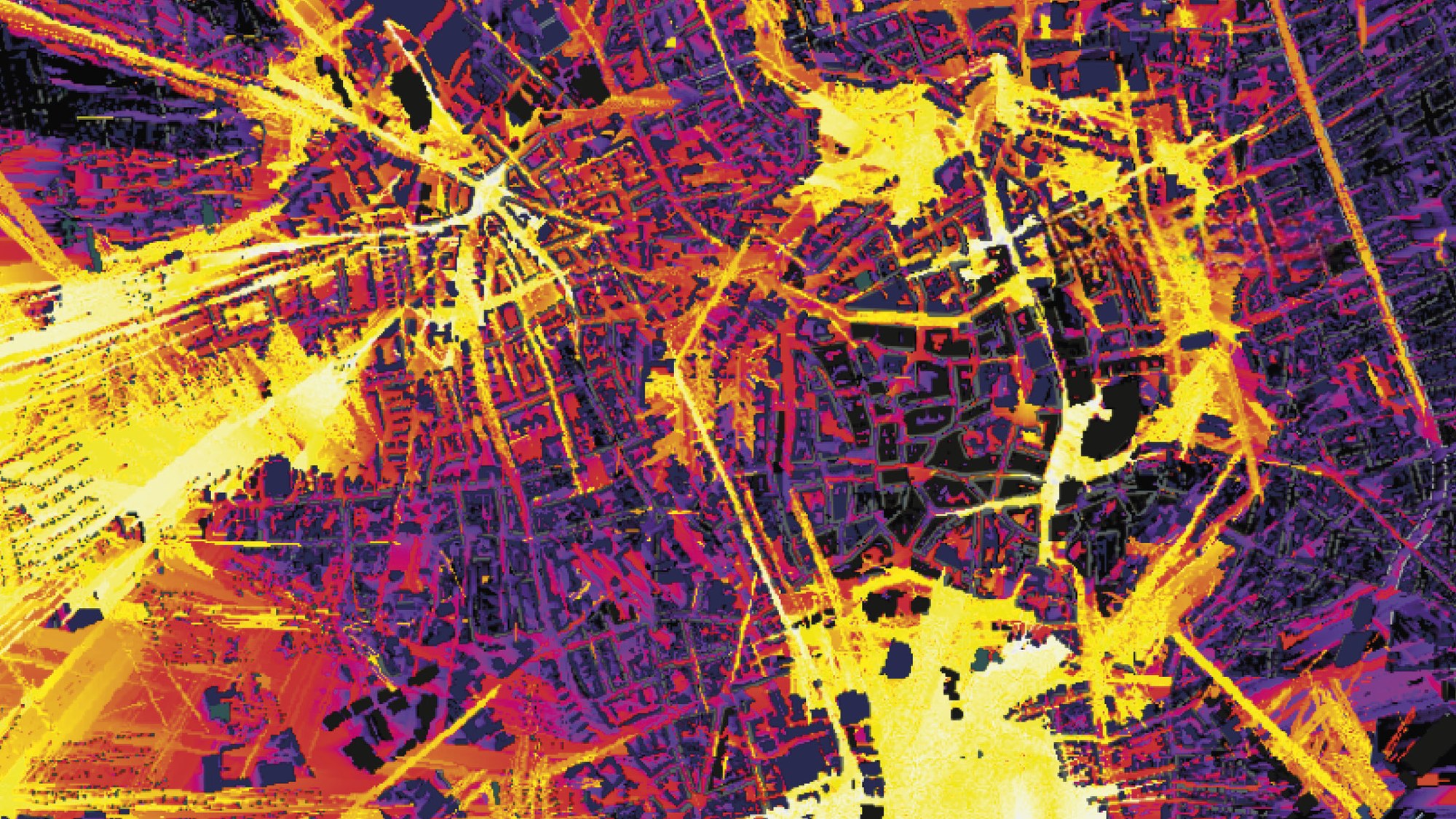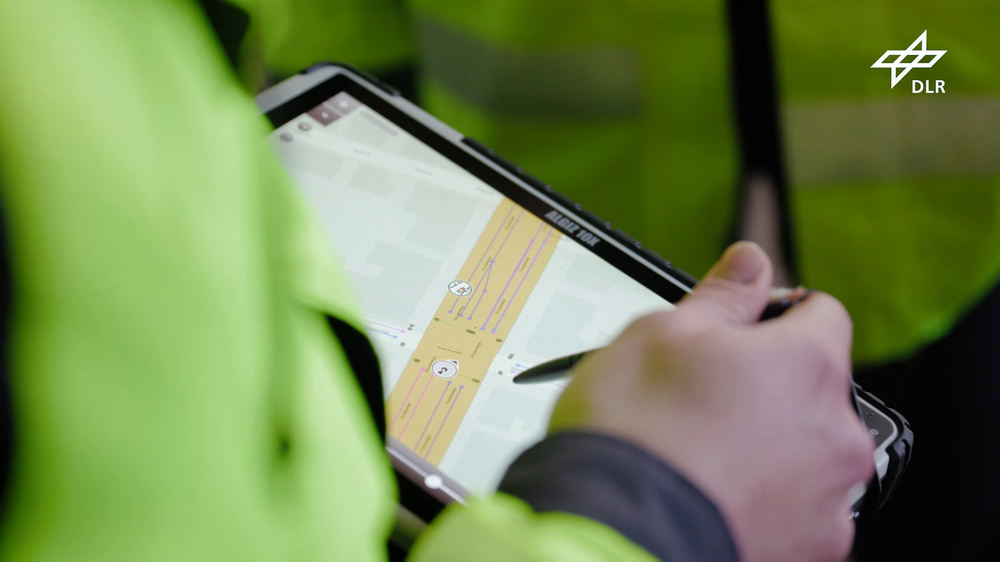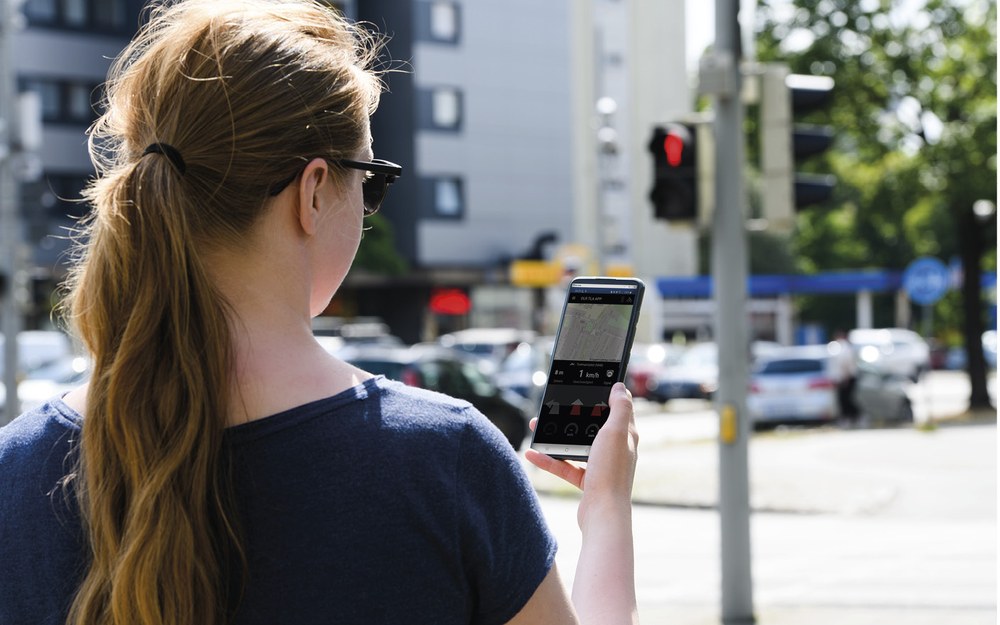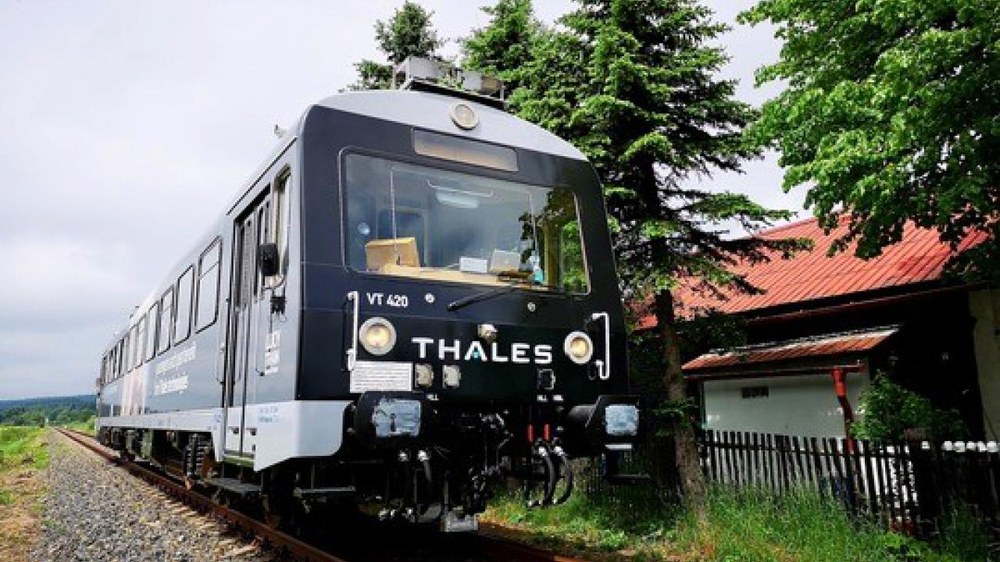What's up with 5G?

Institut für Nachrichtentechnik, TU Braunschweig
Augmented reality, networked vehicles, telemedicine and smart homes – these are just a few of the concepts associated with the 5G mobile communications standard. The fifth generation of mobile communications enables data transmission up to 10 times faster than LTE (4G) – fast enough for real-time communication. Researchers at DLR are harnessing the power of 5G to develop technologies for networked mobility, such as intelligent 'green waves', drone support for emergency services and automated train operation. But before these new technologies can be rolled out, they must undergo extensive testing. The 5G Living Lab in the Braunschweig-Wolfsburg transport region is managed by DLR for this purpose.
A team of DLR researchers recently used the Living Lab to test three use cases for 5G technologies: improving the mobility of rescue vehicles, operating a drone to assist emergency responders and remotely operating a malfunctioning automated train. For all three use cases, the low latency of 5G data transmission and the ability to quickly exchange vast quantities of data were essential. The 5G Living Lab enabled these new technologies to be tested within real urban environments using the existing public 5G network.
Green wave for emergency responders

In the Emergency Services sub-project, the DLR researchers equipped various traffic lights at intersections in Braunschweig and Wolfsburg with a transmit/receive module. When emergency vehicles from the fire brigade approached the intersection, they automatically sent a signal to the traffic lights that prompted them to switch to green as soon as the vehicle reached them. "This allows the emergency services to cross the intersection safely, which is particularly important for the safety of all road users in urban environments," says Sten Ruppe from the DLR Institute of Transportation Systems, who is coordinating the testing of this use case. "This smart 'green wave' also helps emergency workers to skilfully overtake in traffic and arrive at their destination more quickly." The researchers used the 5G Living Lab to successfully test the system in real traffic. "The fire brigade was happy to support our research, as they experience the risk to themselves and other road users associated with rapidly navigating through traffic every day," adds Ruppe.

The 5G Living Lab project at a glance
Partner organisations:
DLR (Institute of Transportation Systems, Institute of Flight Guidance and Institute of Flight Systems), TU Braunschweig, Fraunhofer Institute for Integrated Circuits, Institute for Automation and Communication, Physikalisch-Technische Bundesanstalt and approximately 36 subcontractors
Funding:
Federal Ministry for Digital and Transport 5G Innovation Programme, 12 million euro from late 2019 to mid-2023
Website:

The researchers are now developing the technology for an app designed to inform other vehicles, pedestrians and cyclists about a fire brigade deployment near their current route. They are also exploring whether this technology could be used to instruct automated vehicles to form a rescue lane as soon as they receive notification of a nearby incident. This application is being tested in conjunction with TU Braunschweig. "During the course of the project, we used the Living Lab to conduct simulations and emergency vehicle mobility tests to determine the benefits of 5G compared to other radio technologies for these vehicles, and establish whether automatic communication could be used to prompt automated vehicles to form a rescue lane," says Ruppe.
Remote train operation for crisis scenarios
5G can be used to transmit large quantities of data much more quickly than previous standards such as LTE (4G). DLR researchers used this advantage to test the operation of an automated, uncrewed train in the Ore Mountains. During the tests, the train was operated by a qualified train driver located 340 kilometres away at the DLR-operated control centre in Braunschweig. "The ability to take control of an automated train remotely is essential," says Niels Brandenburger from the Institute of Transportation Systems, who played a key role in coordinating the activity. "In the case of a malfunctioning vehicle, we must be able to quickly gain remote access in order to rectify the fault or to drive it away. Our tests show that the technology works and mark a milestone for modern rail operations."

During the tests, video footage acquired by cameras on the train, commands from the control centre and diagnostic messages were all transmitted in real time via the 5G network. Brandenburger and his team examined human performance from an occupational psychology perspective. "The train driver relies primarily on the video feed arriving in Braunschweig in order to operate the train remotely, so the reliable transmission of large quantities of data is essential," says Brandenburger. "In several previous studies, we examined the minimum quality of video necessary for a train driver to be able to reliably operate a train from a remote control room." The initial results from these studies demonstrated the need to avoid a collapsing bit rate and variable latency –particularly one that exceeds 200 milliseconds. During the tests at the Living Lab, the 5G communication technology successfully met these requirements.

Drone prepares emergency workers for deployment

The DLR team also investigated the use of a drone for specific rescue scenarios encountered by the Braunschweig fire brigade. The drone was used to transmit live video from the scene of an incident via 5G to the emergency services long before they arrived. It was operated from a control centre at the DLR site in Braunschweig and navigated automatically using references to specific waypoints. The drone was equipped with a high-resolution camera and a thermal imaging camera and used these systems to transmit a continuous stream of video from the scene of the incident to the tablet of the operations manager. "We used the drone to conduct an exciting, simulated water rescue on the Allersee in Wolfsburg," says Andreas Volkert from the DLR Institute of Flight Guidance. "The diving squad of the Wolfsburg fire brigade rehearsed a deployment while we supported them from the air. Our drone flew 30 metres above the water and provided the emergency services with sharp video imaging. This enabled them to study the lake from above and spot the person in distress much more quickly than would have been possible from the land or a boat. Even when the person – in this case, a professional diver – was at the bottom of the lake, approximately three metres below the surface, the emergency team was able to identify them clearly in the video." The operations manager controlled the drone's camera alignment using an app, which made it possible to zoom in or select different parts of the image. Artificial intelligence was also used to help analyse the images. It can, for example, identify dangerous goods signs on nearby vehicles. Emergency workers can use the system to analyse a situation before they arrive and make important decisions at a very early stage. These minutes can be crucial in an emergency. DLR researchers are currently working with the fire brigade to examine how such a system could be put into practice, how exactly the drone should be operated, and other applications for which a drone may be suitable.

Transport region enables practical research
Political and regional support was indispensable for the operation of the 5G Living Lab. During its period of active operation, the city councils of Braunschweig and Wolfsburg provided support and granted the researchers access to their transport infrastructure. The Lab benefited from close integration with the test fields that already exist in the region, such as the Test Bed Lower Saxony and the Test Field Digital Mobility. This project used data acquired at the test fields and, in turn, the project researchers made the data acquired at the 5G Living Lab available to users of the test fields. This included precise maps of the area used to test emergency vehicle mobility scenarios. Braunschweig and Wolfsburg city councils provided additional map data, including material showing active building development. "For this project, we established a software platform that stored these static data as well as dynamic data such as the variable status of the traffic lights. This platform was shared between the teams exploring the different use cases," explains Sascha Knake-Langhorst from the Institute of Transportation Systems. The software platform also stores the data acquired during the tests at the 5G Living Lab. The drone assisting the fire brigade, for example, used information about the variable status of the traffic lights that was initially collected for use in the Emergency Services sub-project. The data on active building development within the cities were also stored on the platform and used by the drone for flight planning and by the emergency service vehicles to improve their route planning.

Although the official support for the 5G Living Lab has come to an end, the organisations involved are keen to preserve the network and the technical systems established in the region in order to continue its operation. The Lab offers a unique opportunity to capitalise on the knowledge gained here and explore further 5G use cases.
An article by Anna Schieben from the DLRmagazine 173

